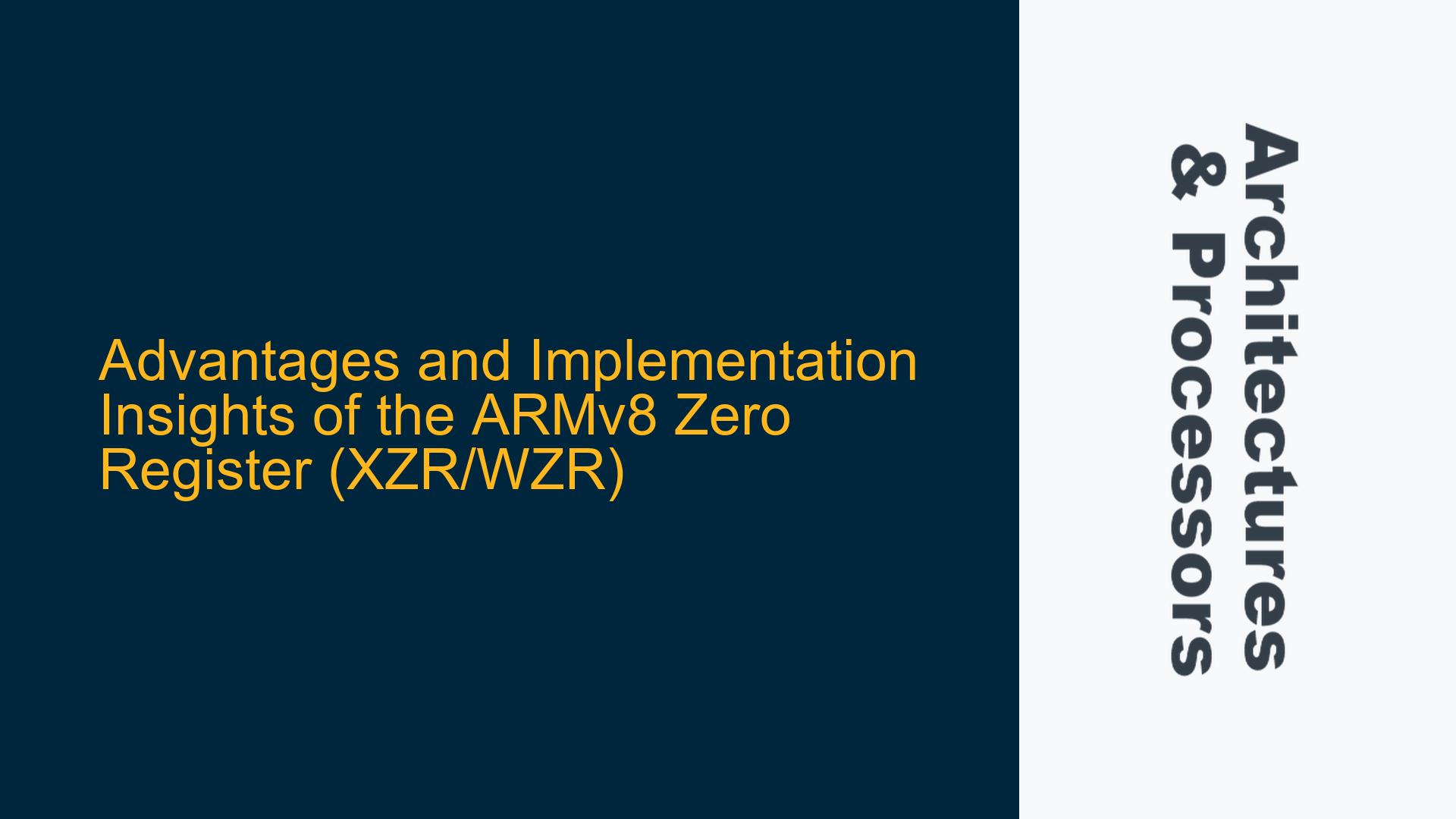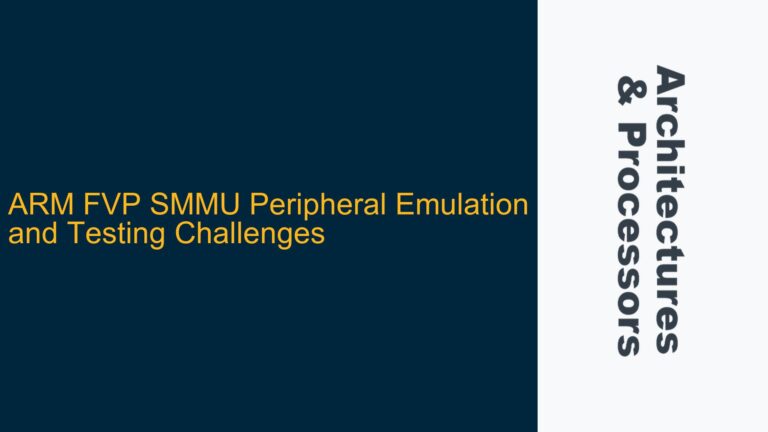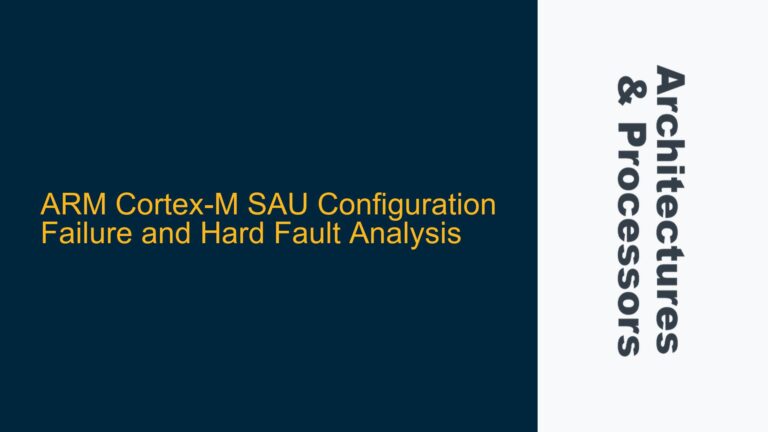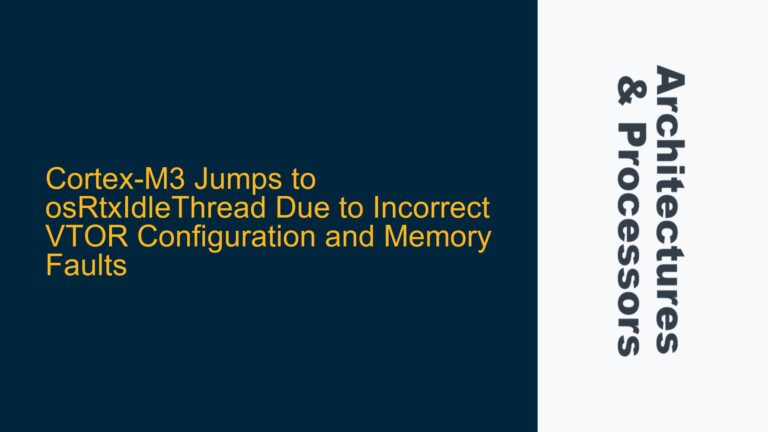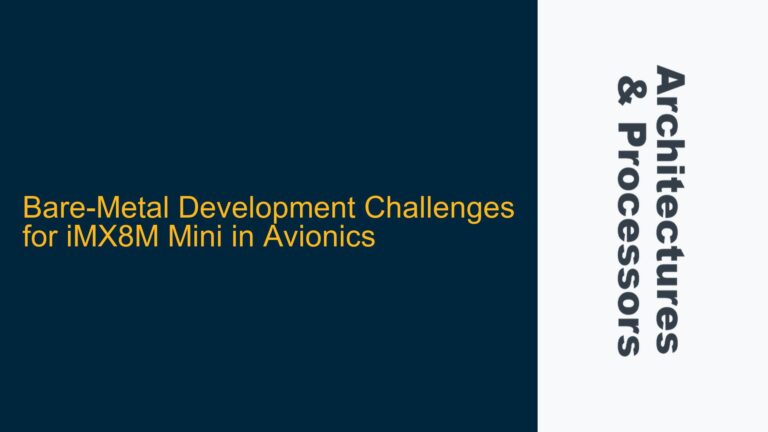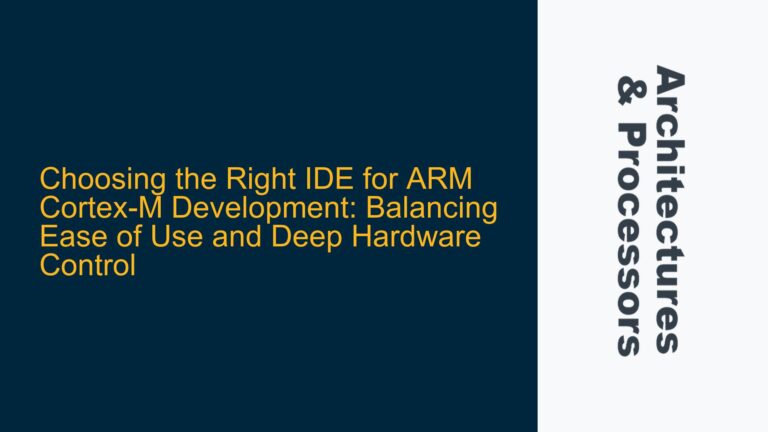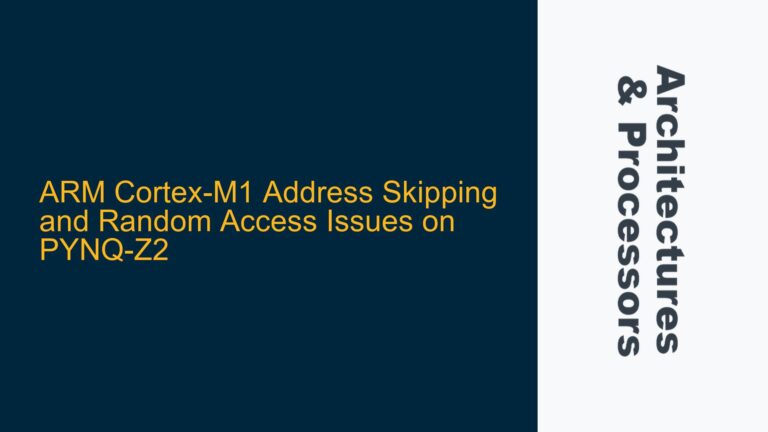ARMv8 Zero Register: Architectural Benefits and Cost Analysis
The ARMv8 architecture introduced the Zero Register (XZR/WZR), a unique feature that has sparked discussions about its advantages and the associated costs of implementation. The Zero Register is a special-purpose register that always reads as zero and discards any data written to it. While its implementation might seem trivial at first glance, its presence in the ARMv8 instruction set architecture (ISA) offers significant benefits in terms of instruction encoding efficiency, code density, and simplification of certain operations. This post delves into the architectural rationale behind the Zero Register, its advantages, and the cost-benefit analysis of its implementation.
Architectural Role of the Zero Register in ARMv8
The Zero Register (XZR/WZR) in ARMv8 serves as a versatile tool for simplifying instruction encoding and reducing the complexity of certain operations. Unlike general-purpose registers, the Zero Register does not store data; instead, it provides a constant value of zero or acts as a sink for discarded data. This functionality is particularly useful in scenarios where a zero value is required, such as clearing a register, initializing memory, or performing comparisons.
One of the primary advantages of the Zero Register is its ability to reduce the number of opcodes required in the instruction set. By leveraging the Zero Register, ARMv8 can encode certain operations more efficiently, leading to improved code density and reduced instruction fetch bandwidth. For example, instead of having separate instructions for moving a zero value into a register or performing a no-op operation, the Zero Register allows these operations to be expressed using existing instructions with the Zero Register as an operand.
The Zero Register also simplifies the implementation of certain instructions. For instance, in AArch64, the Zero Register can be used to implement the MOV instruction for zeroing a register without requiring a dedicated opcode. This reduces the complexity of the instruction decoder and frees up opcode space for other instructions. Additionally, the Zero Register can be used in conjunction with other instructions to perform operations like clearing flags or initializing counters, further enhancing its utility.
From a hardware perspective, the Zero Register is not implemented as a physical register. Instead, it is treated as a special case by the processor’s logic. When an instruction references the Zero Register, the processor interprets it as a constant zero value or discards the data being written. This approach minimizes the hardware overhead associated with implementing the Zero Register, as it does not require additional storage or complex logic.
Cost-Benefit Analysis of Implementing the Zero Register
The implementation of the Zero Register in ARMv8 involves a trade-off between hardware complexity and architectural benefits. While the Zero Register does not require a physical register, its implementation does introduce some additional logic in the processor’s instruction decoding and execution pipeline. However, the benefits of the Zero Register often outweigh these costs, particularly in terms of instruction encoding efficiency and code density.
One of the key advantages of the Zero Register is its ability to reduce the number of opcodes required in the instruction set. By leveraging the Zero Register, ARMv8 can encode certain operations more efficiently, leading to improved code density and reduced instruction fetch bandwidth. This is particularly important in embedded systems, where memory and power constraints are critical considerations. The reduced instruction fetch bandwidth also contributes to lower power consumption, as fewer instructions need to be fetched and decoded.
The Zero Register also simplifies the implementation of certain instructions. For example, in AArch64, the Zero Register can be used to implement the MOV instruction for zeroing a register without requiring a dedicated opcode. This reduces the complexity of the instruction decoder and frees up opcode space for other instructions. Additionally, the Zero Register can be used in conjunction with other instructions to perform operations like clearing flags or initializing counters, further enhancing its utility.
From a hardware perspective, the Zero Register is not implemented as a physical register. Instead, it is treated as a special case by the processor’s logic. When an instruction references the Zero Register, the processor interprets it as a constant zero value or discards the data being written. This approach minimizes the hardware overhead associated with implementing the Zero Register, as it does not require additional storage or complex logic.
Practical Applications and Optimization Techniques Using the Zero Register
The Zero Register (XZR/WZR) in ARMv8 is not just a theoretical construct; it has practical applications that can lead to significant optimizations in both software and hardware. Understanding how to effectively use the Zero Register can help developers write more efficient code and optimize their applications for performance and power consumption.
One of the most common uses of the Zero Register is in zeroing out other registers or memory locations. For example, in AArch64, the instruction MOV X0, XZR can be used to set the register X0 to zero. This is more efficient than using a literal zero value, as it avoids the need to encode a 64-bit zero value in the instruction. Similarly, the Zero Register can be used in store instructions to clear memory locations, such as STR XZR, [X1], which stores a zero value at the memory address contained in X1.
The Zero Register is also useful in comparison operations. For example, the instruction CMP X0, XZR compares the value in X0 with zero, effectively checking if X0 is zero. This is a common operation in loops and conditional statements, and using the Zero Register simplifies the instruction encoding and reduces the instruction count.
Another practical application of the Zero Register is in the implementation of no-op (no operation) instructions. In some cases, a no-op can be implemented by writing to the Zero Register, such as MOV XZR, X0. This instruction discards the value in X0 and does not modify any other registers or memory locations. While this may seem trivial, it can be useful in certain scenarios, such as aligning instruction boundaries or inserting delays in a pipeline.
In addition to these applications, the Zero Register can be used in conjunction with other instructions to perform more complex operations. For example, the Zero Register can be used in bitwise operations to clear specific bits in a register. The instruction AND X0, X0, XZR clears all bits in X0, effectively setting it to zero. Similarly, the Zero Register can be used in arithmetic operations to perform subtraction or addition with zero, which can be useful in certain algorithms.
From a hardware optimization perspective, the Zero Register can help reduce the complexity of the instruction decoder and execution pipeline. By treating the Zero Register as a special case, the processor can avoid unnecessary data movements and simplify the logic required to handle zero values. This can lead to improvements in performance and power efficiency, particularly in deeply embedded systems where resources are limited.
In conclusion, the Zero Register (XZR/WZR) in ARMv8 is a powerful tool that offers significant benefits in terms of instruction encoding efficiency, code density, and hardware optimization. By understanding its architectural role and practical applications, developers can leverage the Zero Register to write more efficient code and optimize their applications for performance and power consumption. While the implementation of the Zero Register does involve some additional logic, the benefits it provides often outweigh the costs, making it a valuable feature of the ARMv8 architecture.
